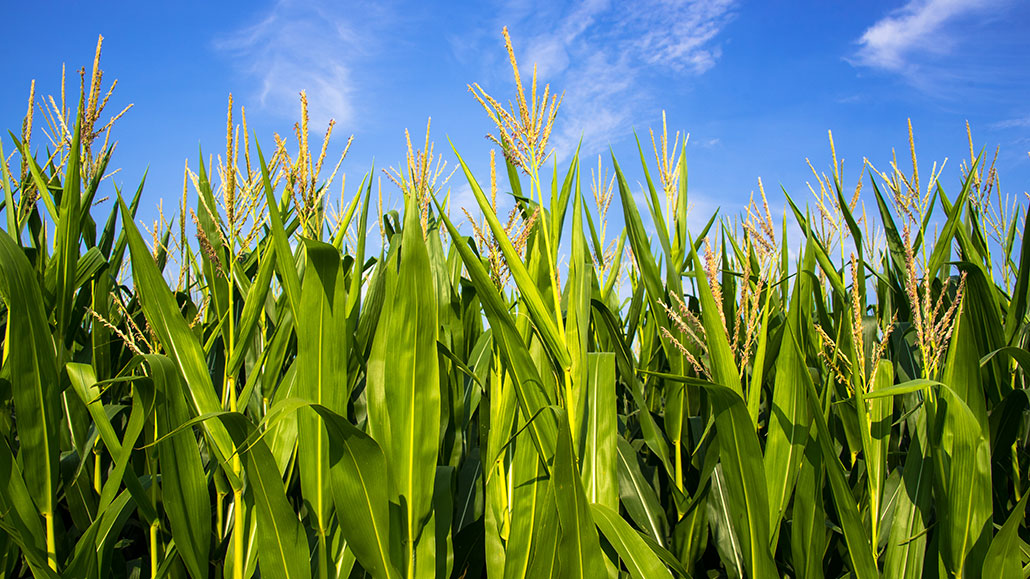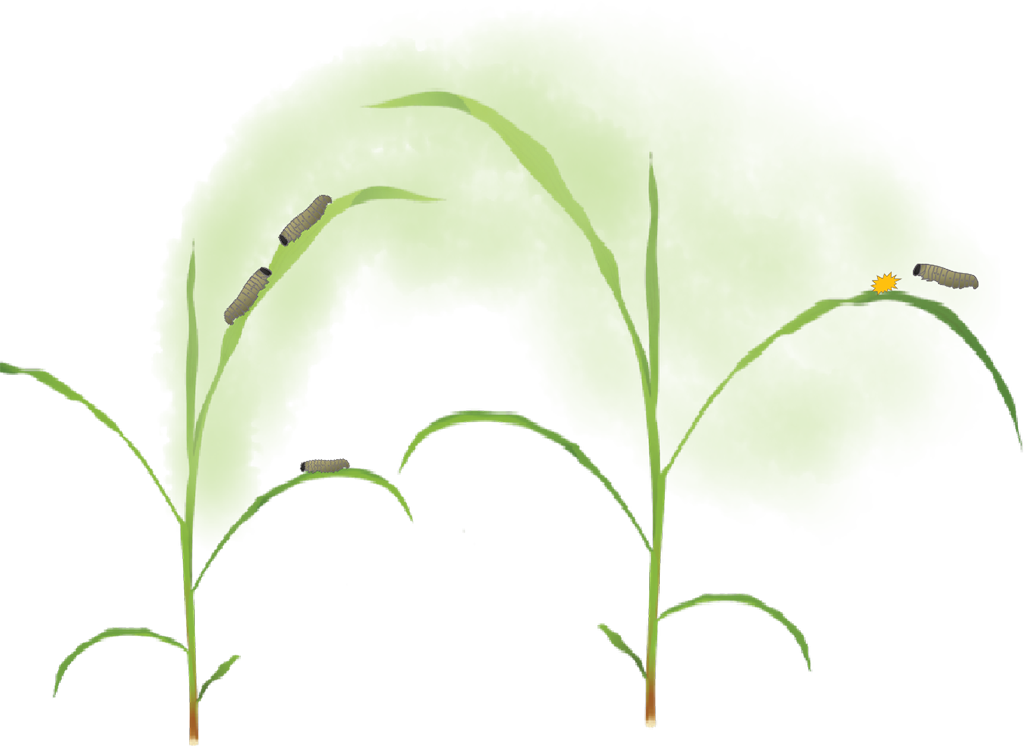Young corn leaves can ‘smell’ danger
As they mature, these leaves lose their ability to detect threatening scents

How do the corn plants in this Iowa field know of an impending insect threat? They might know by sniffing the telltale scent of danger through their leaves. But not all leaves are able to smell equally well, new data show.
Nancybelle Gonzaga Villarroya/Moment/Getty Images Plus
Share this:
- Share via email (Opens in new window) Email
- Click to share on Facebook (Opens in new window) Facebook
- Click to share on X (Opens in new window) X
- Click to share on Pinterest (Opens in new window) Pinterest
- Click to share on Reddit (Opens in new window) Reddit
- Share to Google Classroom (Opens in new window) Google Classroom
- Click to print (Opens in new window) Print
Plants can often tell when they’re in danger — by smell. But not all leaves sniff out threats equally well. In corn plants, baby leaves do this best, new data show.
“They recognize that danger is around the corner,” says Lei Wang. He’s a plant biologist at the University of Bern in Switzerland. He and his colleagues shared the new findings September 11 in Current Biology.
Many plants are known to beef up their chemical defenses when they’re about to get chomped on by insects. One way plants sense such threats is through scent. Plants, obviously, do not have noses. But like noses, they can detect odor molecules floating through the air. Those molecules may waft off an insect’s saliva. Or they may come from neighboring plants that have already been attacked and are on death’s door.
“This phenomenon has been known for a very long time,” Wang says. But scientists have known little about which parts of plants actually sniff out danger. And they’ve known even less about the chemical signals that allow plants to do this danger detection. So when it comes to the new data, Wang says, “that’s what excites us most.”

Babies are the super-sniffers
Originally, Wang and his team set out to identify airborne chemicals that plants receive as warning scents. But when they started their study, they found that the adult corn leaves they tested did not produce many anti-predator chemicals in response to the scents.
So the researchers had to turn over a new leaf, so to speak. They turned to baby leaves. These are much more fragile than the adult leaves that scientists usually study. Wang’s group had to adopt techniques from cutting flowers to grow, cut and test the young leaves.
In the lab, the team exposed young and adult corn leaves to a common danger-signaling scent. This green-leaf compound is similar to the odor of freshly cut grass. A corn plant might encounter this scent if a nearby plant was in danger. The researchers measured how much danger signal each leaf released in response to the warning odor.
New leaves tended to spew far more than adult leaves. Even though the adult leaves were worse at “smelling,” however, they did release small amounts of defense chemicals. Other research shows that these leaves can process danger signals other than scent (such as insects munching on them). They can respond to these attacks, too, by issuing chemicals aimed at combating the threat.

Still much to understand
The researchers don’t know exactly why young corn leaves sniff out danger better than older ones do. They suspect plants might upgrade the sensing abilities in their baby leaves because these leaves are the most vulnerable ones.
Young leaves also typically emerge at the top of a plant. That means they’re more exposed to air blowing from long distances. So plants might benefit more from these leaves serving as an early warning system. Scientists need to study this more, though, before they can be sure that’s the reason.
This research opens up many questions for Wang’s team. One is, where on a leaf does the sniffing take place?
Ted Turlings wonders the same thing. “Are there specific receptors in the leaves that are able to detect these compounds?” asks this ecologist at the University of Neuchâtel in Switzerland.
For Wang, this study has personal meaning. “My parents are farmers,” he says. So when it comes to this research, he explains, “it’s not just to satisfy my curiosity. I really want to solve some urgent questions in agriculture.”
Wang hopes his research may lead to the breeding of smarter crops — ones more resistant to insects. In the long run, that should reduce a need for toxic pesticides.







